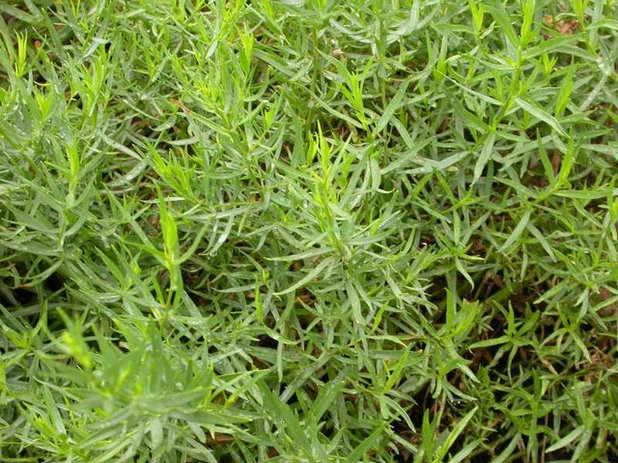For many people, tarragon is one of those herbs you’ve heard of but don’t really know. It’s not particularly showy or overly fragrant, yet its leaves are a staple of classic French cuisine, and its light aroma is said to repel insects.
It’s a compact plant, usually less than 2 feet tall, and it's a slow spreader, so is also a good container choice. It’s easy to grow where it will do well, but doesn’t like climate extremes. For the best culinary tarragon, you’ll need to grow it from nursery plants or cuttings.
Unfortunately for shoppers, while French tarragon is what cooks prize, a plant labeled “Tarragon” is just as likely to be the hardier but less flavorful Russian tarragon. If it’s labeled “Sativa,” it’s what you want. You’ll need to check labels carefully and, for good measure, taste the leaves to be sure you’re getting the flavor you want.
Shoppers in the hottest climates and those looking at seed catalogs will find Mexican tarragon for sale. Although not related to true tarragon, it has a similar taste, holds up in hot weather and can be grown from seed. If you live in the Southwest or Deep South, it may be your only choice.

Missouri Botanical Garden
Light requirement: Full sun in the morning and partial shade in the afternoon, especially where summers are hot
Water requirement: Moderate to regular
Prime growing season: Spring through fall; spring and early summer is the best time to plant
Favorites: French (Sativa)
Planting and care: Choose a spot with rich, well-drained soil and set out plants at 2-foot intervals. If growing in a container, choose one at least 10 to 12 inches deep.
Let the plants dry out between waterings. Harvesting the tips on a regular basis will help keep the plants from becoming overgrown or leggy. Add a complete fertilizer in spring and after a large harvest. The plants will die back in winter but should return except in the coldest winter climates. You will probably need to divide them every three to four years.
The main pests you will encounter will be snails and slugs. Rust and mildew may also cause a few problems, although that is rare.
Harvest: Pick the leaves as needed. Use the earliest spring leaves to flavor vinegar. Drying tarragon can result in less flavorful leaves, but they do freeze.
More guides: Learn to grow your own tasty herbs





